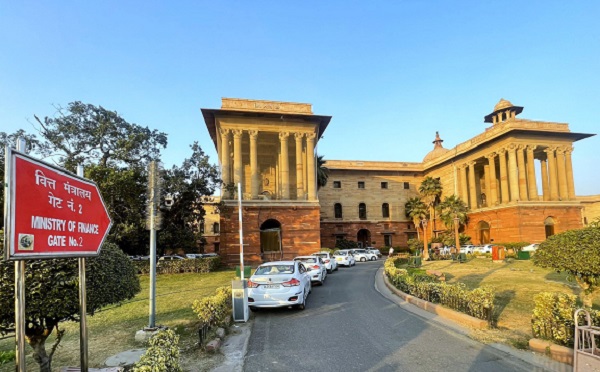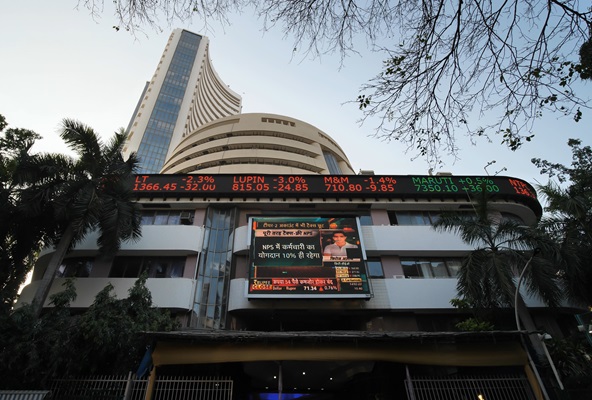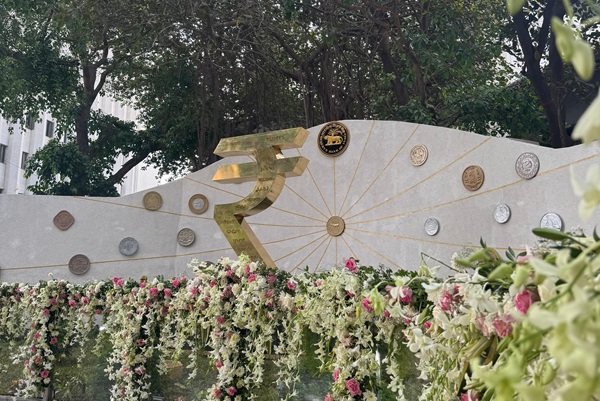.png)

Datametricx is a veteran journalist tallying the macro game, keeping score of the numbers that shape India’s economy and policy.
September 22, 2025 at 9:58 AM IST
Nut graph
Direct tax collections during the current financial year so far rose 9.2% year-on-year to ₹10.83 trillion, driven largely by a surge in personal income tax. Non-corporate tax receipts, which consist primarily of personal income tax, rose 13.7% to ₹5.84 trillion, while corporate tax collections increased 4.9% to ₹4.72 trillion. Until mid-August, collections were down 3.9% year-on-year but rebounded after the government extended the income tax return filing deadline to September 16 this year, compared with July 31 last year. Despite the sharp rise, direct tax collections will have to grow nearly 17% in the remaining months to meet the Budget target of ₹25.20 trillion. At the current pace, direct tax collections in 2025-2026 will fall short of the target by ₹1.5 trillion.
Week in Numbers
Total Kharif acreage rose 1.4% year-on-year to 110.1 million hectares as of September 12, above the normal area of 109.7 million hectares. Rice acreage, which accounts for more than a third of the Kharif area, rose 2.0% to 43.9 million hectares. Despite the overall increase, oilseed and cotton acreage were down 2.6% and 2.5% at 18.9 million hectares and 11.0 million hectares, respectively.
Southwest monsoon rainfall has remained strong. Cumulative rainfall as of September 19 was 880.7 millimetres, 8% above the long-period average and 1% higher than the seasonal normal of 868.6 millimetres. Reservoir storage as of September 18 stood at 163.9 billion cubic metres, about 90% of capacity and 19% above the 10-year average.
India’s foreign exchange reserves topped the $700-billion mark after nearly three months, reaching $703.0 billion as of September 12, up $4.7 billion from a week earlier. They are now just $1.9 billion below the all-time high of $704.9 billion, recorded almost a year ago. Foreign currency assets stood at $587.0 billion and gold reserves at $92.4 billion. Reserves have risen $36.6 billion so far in 2025-26, helped partly by higher gold prices.
Money supply growth slows
Growth in broad money supply (M3) eased to 9.5% year-on-year as of September 5 from 9.8% a fortnight earlier. Currency with the public rose 9.3% versus 9.1%, but growth in time deposits with banks slowed to 8.5% from 8.9%. Reserve money growth eased to 4.8% year-on-year as of September 12 from 5.6% a week ago.
External commercial borrowings by Indian companies fell to $3.32 billion in July from $3.58 billion a year ago and $3.48 billion in June. Credila Financial Services was the biggest borrower overseas in July at $750 million, followed by Reliance Power with $500 million.
Bank credit growth outpaces deposits
Bank credit growth outpaced deposits in the week to September 5, with loan growth accelerating to 10.3% year-on-year from 10.0% a fortnight earlier. But bank deposit growth slowed to 9.8% from 10.2% a fortnight ago.
Merchandise export growth moderates
Merchandise exports grew 6.7% year-on-year in August, down from 7.3% in July, partly reflecting the impact of the 50% US import tariffs on Indian goods. Exports totalled $35.10 billion, compared with $37.23 billion in July and $32.29 billion a year ago. The year-on-year was flattered by a 4.6% downward revision in last year’s export data; without it, August growth would have been only 1.8%. Imports fell 10.1% to $61.59 billion, narrowing the trade deficit by 22.2% to $26.49 billion.
Joblessness eases
The unemployment rate for those aged 15 and above fell to 5.1% in August from 5.2% in July, the joint lowest since the monthly series began in April 2025. Among those aged 15-29, the unemployment rate eased to 14.6% from 14.9%. Youth unemployment in urban areas remained elevated at 18.0%.
FCI grain stocks decline
Food grain stocks with the Food Corporation of India fell to 70.20 million tonnes as of September 1 from 72.63 million tonnes a month earlier. Wheat stocks, at 33.30 million tonnes, were the highest for September in four years, while rice stocks were at 36.91 million tonnes, a record high for September.
Passenger vehicle sales slump
Wholesale dispatches of passenger vehicles fell 9.0% year-on-year to 280,839 units in August, the sharpest drop in over three-and-a-half years. Sales declined as buyers postponed purchases after the government announced on August 15 that it plans to cut in GST rates before the festivals. However, two-wheeler wholesales rose 7.1% to 1.83 million units.
Tractor sales surge
Tractor sales jumped 24.6% year-on-year to 73,199 units in August, the fastest growth in six months. Domestic sales grew 28.3% to 64,322 units, while exports rose 3.2% to 8,877. Production of tractors rose 9.4% to 101,943 units.
WPI inflation at 4-month high
Wholesale price inflation rose to 0.52% in August from -0.58% in July, a four-month high, due to higher vegetable and edible oils prices and an unfavourable base effect. Core WPI inflation inched up to 1.7% from 1.1%, the highest in 30 months, though still historically low.
CPI-AL, CPI-RL inch up
Inflation based on CPI for Agricultural Labourers rose to 1.07% in August from 0.77% in July. The CPI for Rural Labourers rose to 1.26% from 1.01%. The data is based on the new series introduced in July 2025.
Coming up
- Sept 22 – Index of Eight Core Industries for August.
- Sept 23 – Flash PMI for September
- Sept 29 – IIP for August
- Sept 30 – Government finances for Apr-Aug
- Oct 1 – GST Collections for September
- Oct 1 – HSBC India Manufacturing PMI for September
Tailpiece
Ironic as it may seem, the Centre could gain financially from the rationalisation of GST. With the government planning to raise excise duty or the National Calamity Contingent Duty on tobacco products after the compensation cess on these products lapses later this year, the Centre revenue may rise. Earlier, the compensation cess was entirely transferred to states.




